Every week, baking expert Alice Medrich is going rogue on Food52 -- with shortcuts, hacks, and game-changing recipes.
Today: Don't throw away your citrus peel just yet: Alice shows us how to turn the would-be trash into a zesty treat.
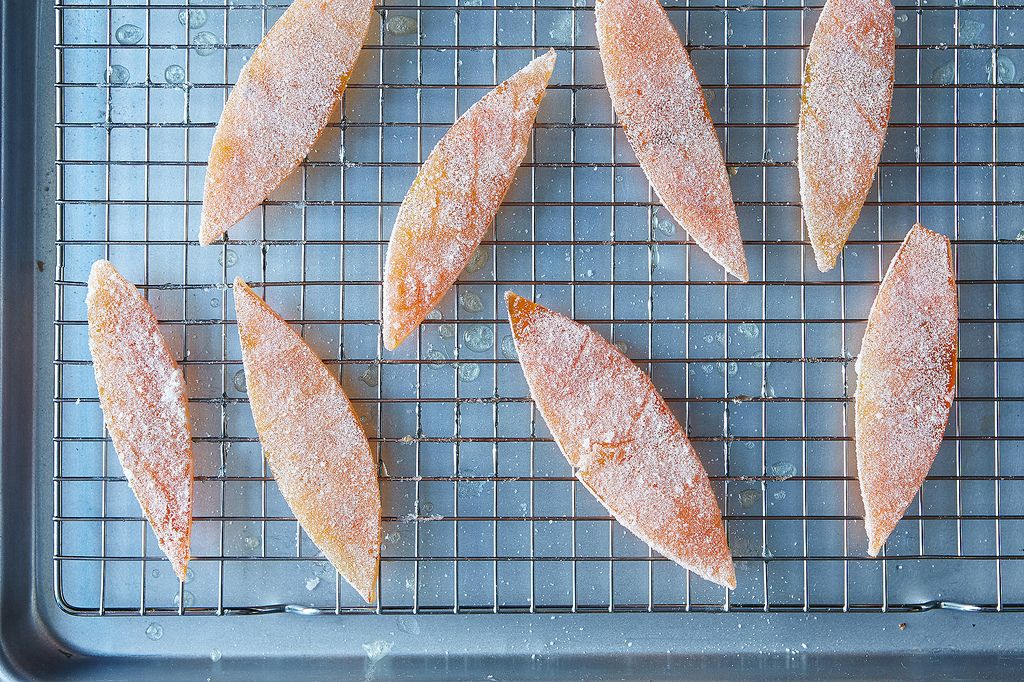
If you have ever tasted handmade candied citrus peel, you know it is an entirely different animal from almost any that you can buy. The good stuff is addictively delicious plain, perfect for dipping in chocolate, and fantastic in recipes. Get to work while the citrus is truly in season and has the most flavor in both the fruit and the peel. Do be finicky enough to buy unsprayed or organic fruit -- otherwise, you will be horrified by the smell of chemicals when you're blanching the peels.
The following recipe presumes that you have not saved up citrus peel from other dishes or from fruit that you have eaten, served, or juiced, which, of course, you can do; some cooks accumulate citrus peels in the freezer until they have enough to candy. You want about 4 cups of the peels, cut into quarters (or sixths, if using grapefruit) for this recipe. It is also worth noting that purists will candy only one type of peel in the same pot, but for every purist there are happy rule breakers.
Candied Citrus Peel
Adapted from Pure Dessert (Artisan 2007)
Makes 3 to 4 cups
4 oranges or tangelos, 2 grapefruit, or 6 to 8 lemons, limes, or tangerines, bright-skinned and preferably organic or unsprayed
1 1⁄2 cups water
1 1⁄2 cups sugar, plus more for dredging
Equipment:
Instant-read or candy thermometer
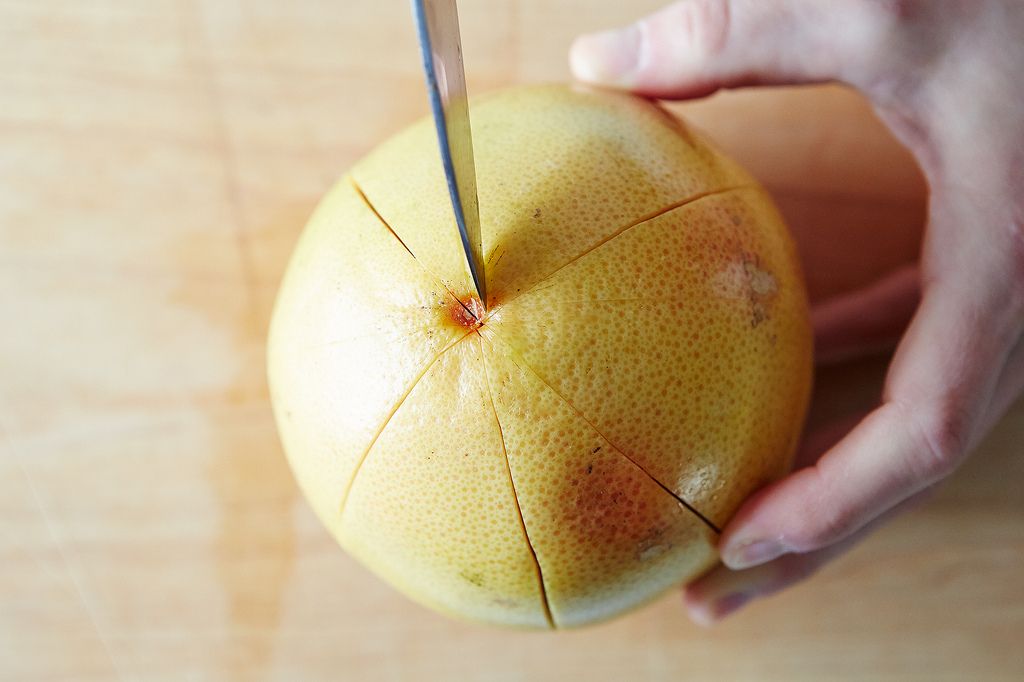
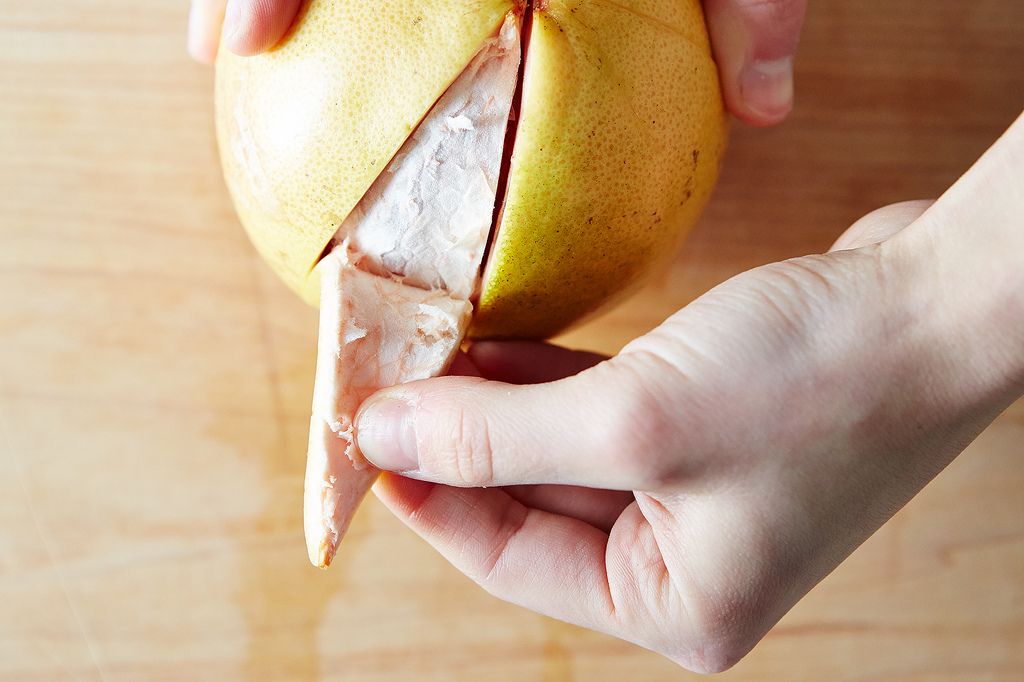
Use a sharp paring knife to score the peel of each fruit into quarters (or sixths or eighths if using grapefruit), cutting just through the skin from the top to bottom all around. Use your fingers to strip the peel from the fruit.
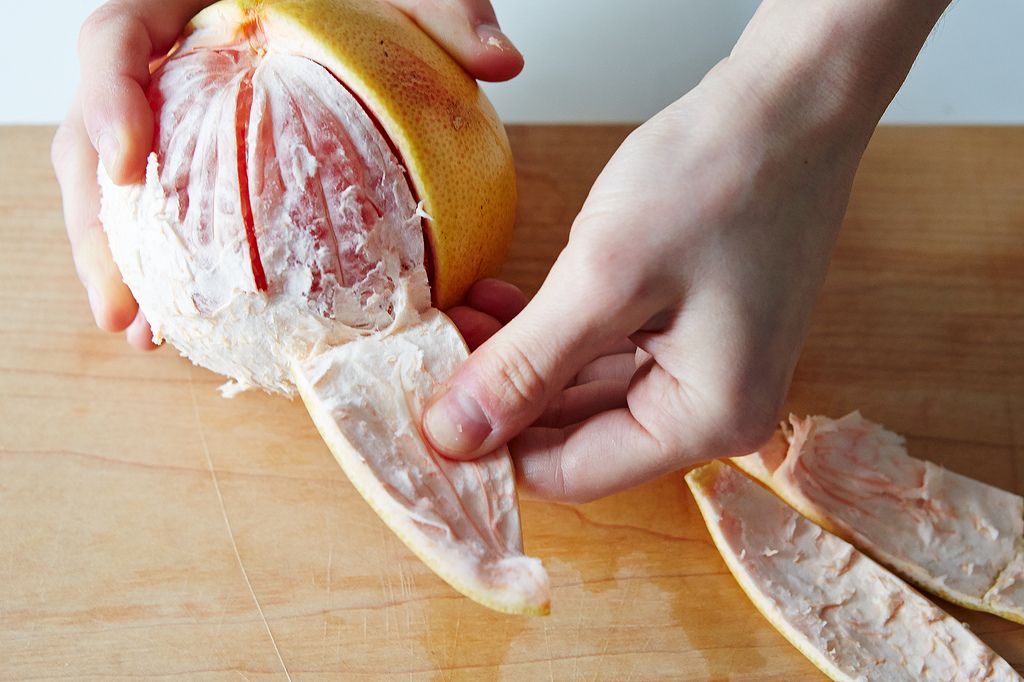

It’s okay if some fruit is left on the peel for now. You should have 3 to 4 cups peel. Save the fruit for another dish.
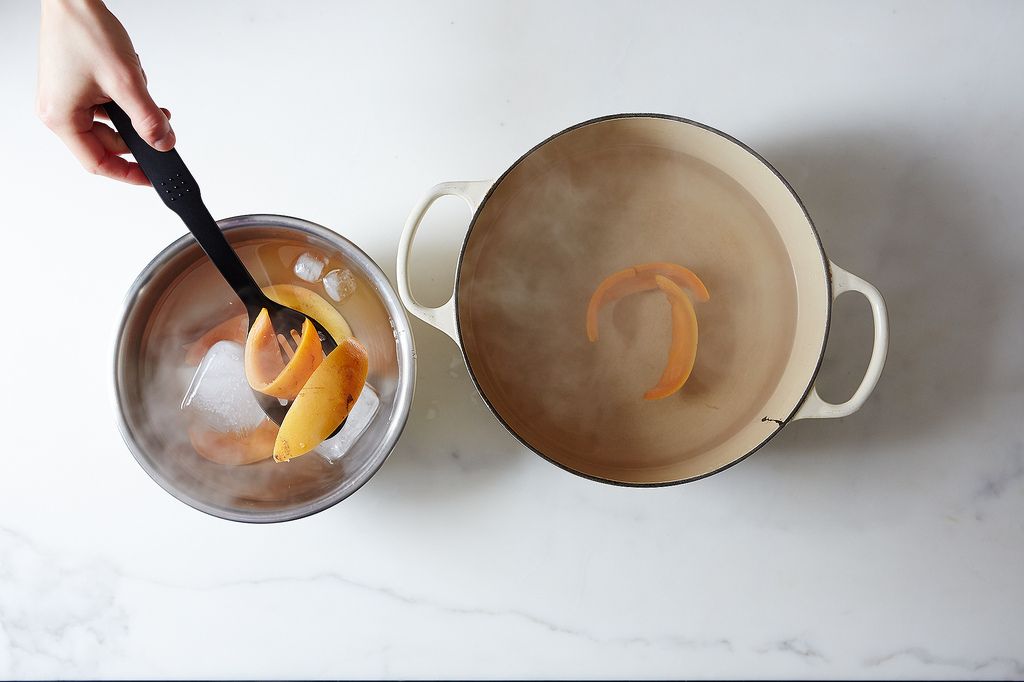
Place the peel in a 3- to 4-quart saucepan and fill the pan with cold water, leaving just enough space for it to boil. Bring the water to a full rolling boil over medium-high heat. Drain the peel and dump it into a large bowl of cold water to cool for a minute. Drain the peels and return them to the saucepan. Repeat the entire blanching and cooling sequence twice for thin-skinned Meyer lemons or tangerines; three times for oranges, regular lemons, or tangelos; or four times for grapefruit.
Blanching rids the fruit of excess harshness and astringency and tenderizes it. The number of blanchings is not cast in stone. With experience, you may increase or decrease the number to get the tenderness and flavor that you like. Even fruit of the same variety varies in texture, skin thickness, and bitterness, so use my guidelines as you will.
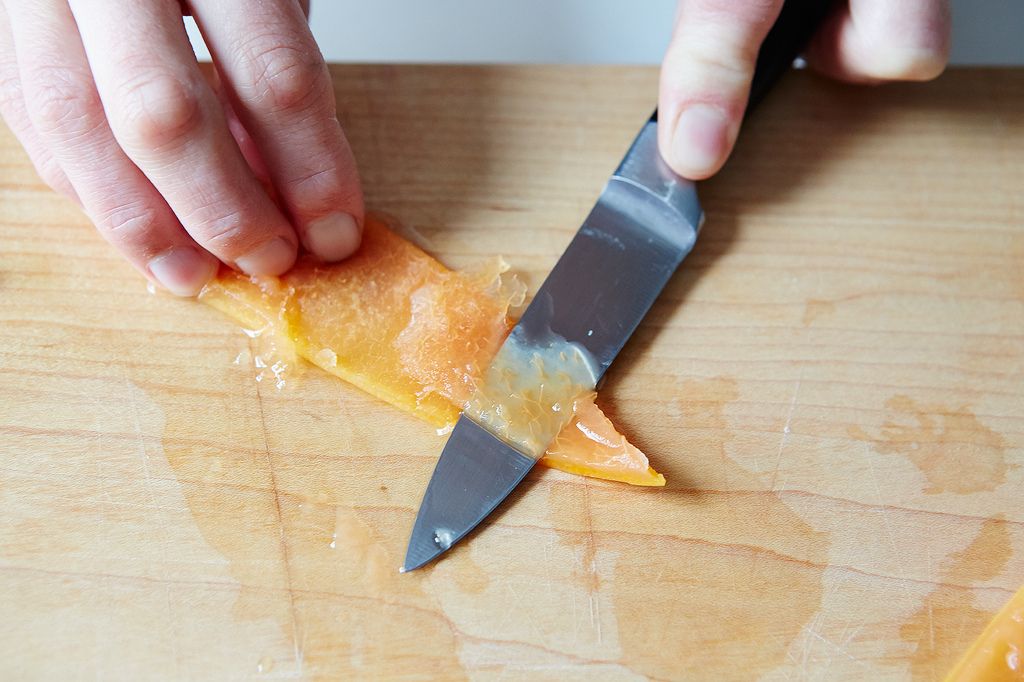

After the final blanching and draining, use a small sharp knife to scrape only the mushiest part of the white pith (and any fruit left on the peel) gently from the peel, leaving thicker lemon, orange, and grapefruit peels about 1/4-inch thick and thinner tangerine or Meyer lemon peels about 1/8-inch thick (thinner skins, in fact, may need little or no scraping).
Cut the peel into strips or triangles or whatever shape you like. [Editors' note: We left our peels in the original wedges.]
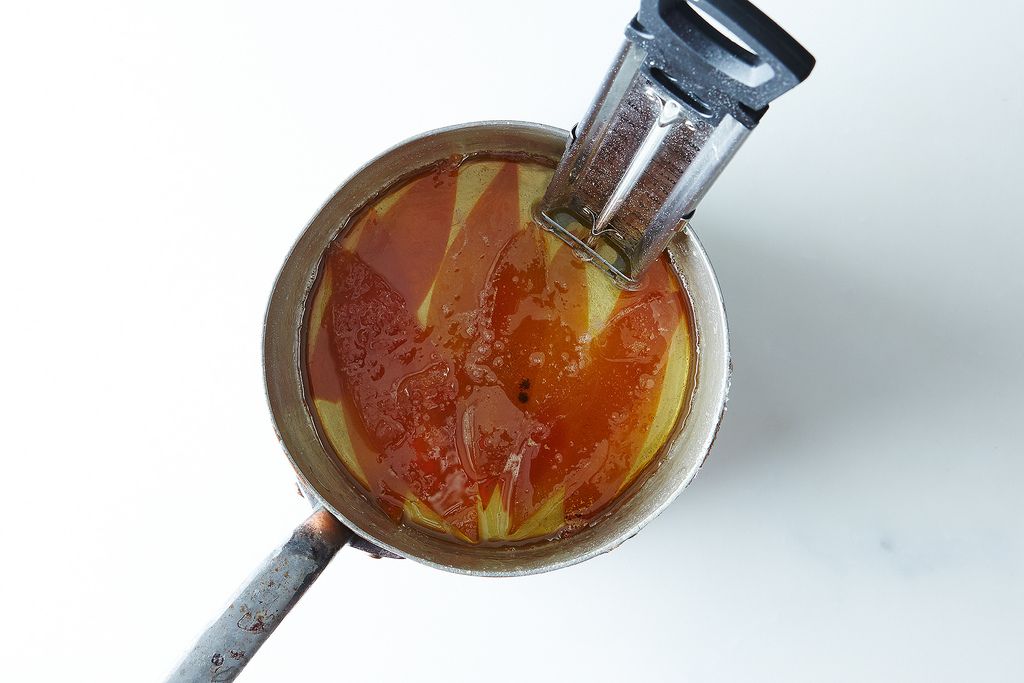
Place the peel in a smaller (2-quart) saucepan with the water and the sugar.
Bring to a simmer over medium-high heat, stirring to dissolve the sugar. Wash the syrup and sugar off the sides of the pan with a wet pastry brush or a wad of wet paper towel. Adjust the heat and simmer the peel uncovered, with little or no stirring, very gently until the syrup registers between 220° F and 222° F and the peel has been translucent for a few minutes; this will take a little more or less than an hour.
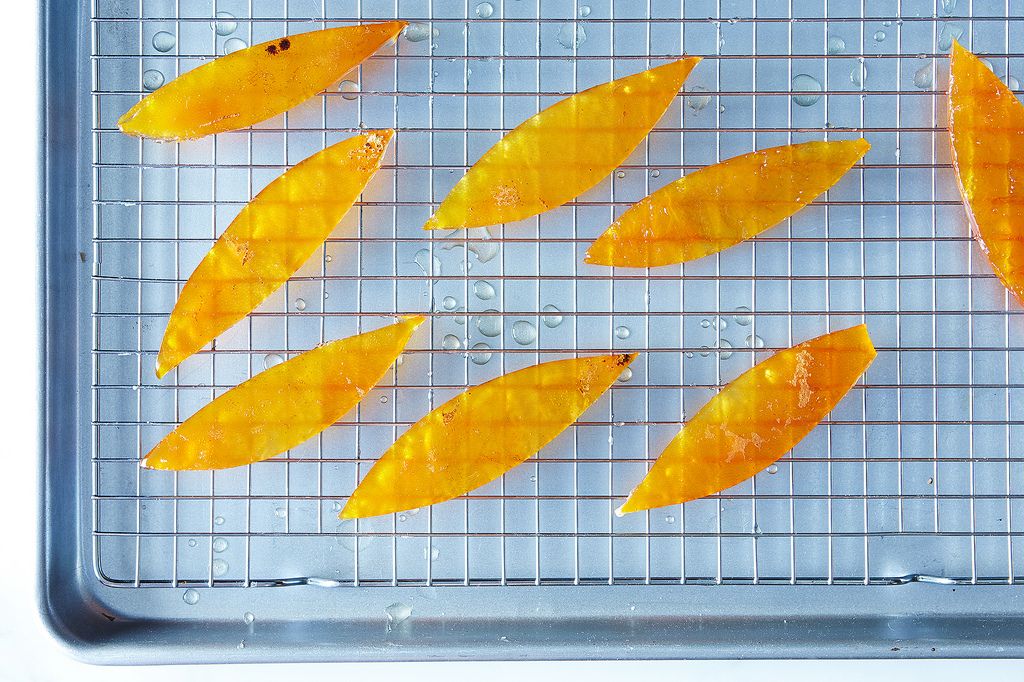
Remove the pot from the heat and use a slotted spoon to transfer the peel to a rack set over a rimmed baking sheet to catch the syrup drips. Spread the peel out in one layer and let cool and dry overnight.
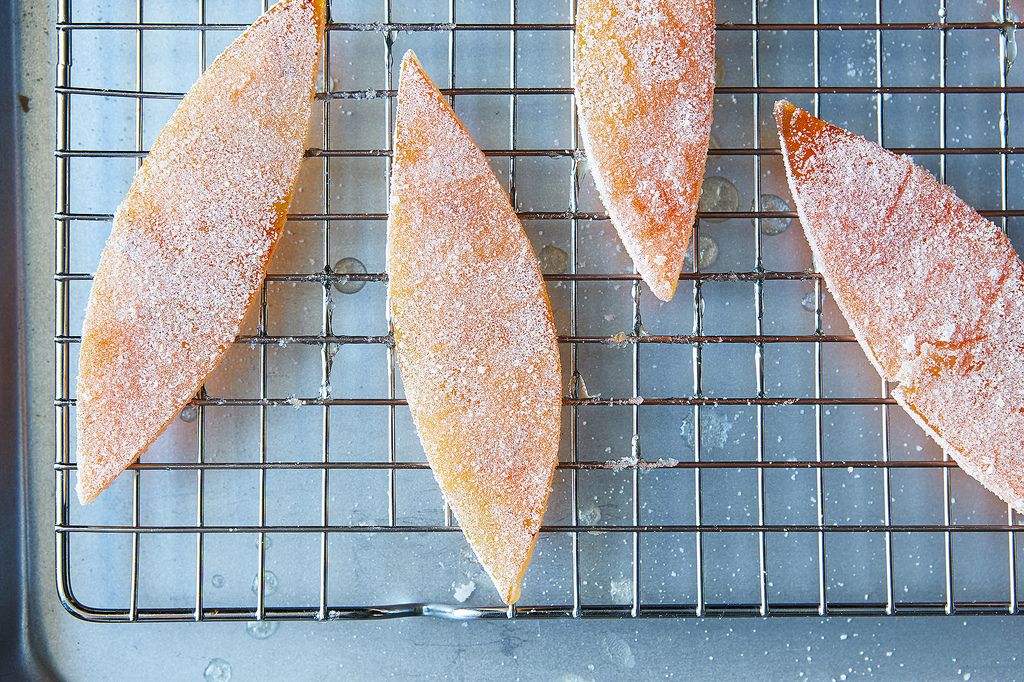
Dredge the peel in sugar to coat. Stored in an airtight container in the refrigerator, where the peel will keep for several months.
See the full recipe (and save and print it) here.
 Pick up a copy of Alice's new book Flavor Flours, which includes nearly 125 recipes -- from Double Oatmeal Cookies to Buckwheat Gingerbread -- made with wheat flour alternatives like rice flour, oat flour, corn flour, sorghum flour, and teff (not only because they're gluten-free, but for an extra dimension of flavor, too).
Pick up a copy of Alice's new book Flavor Flours, which includes nearly 125 recipes -- from Double Oatmeal Cookies to Buckwheat Gingerbread -- made with wheat flour alternatives like rice flour, oat flour, corn flour, sorghum flour, and teff (not only because they're gluten-free, but for an extra dimension of flavor, too).
Photos by Mark Weinberg













See what other Food52 readers are saying.